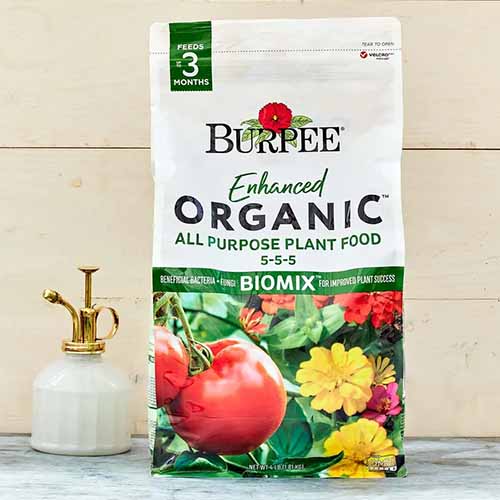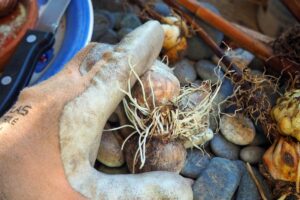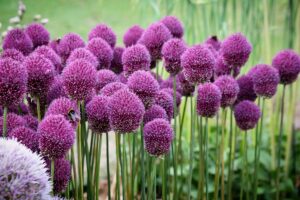Nemesias are charming bedding plants. Half-hardy perennials often grown as annuals in temperate regions, they die off in cold weather but can overwinter in the right conditions.
Hardy only in USDA Zones 9 to 10, in frost-free regions they can be left in the ground as tender perennials, going dormant in cold weather and resuming growth in spring.
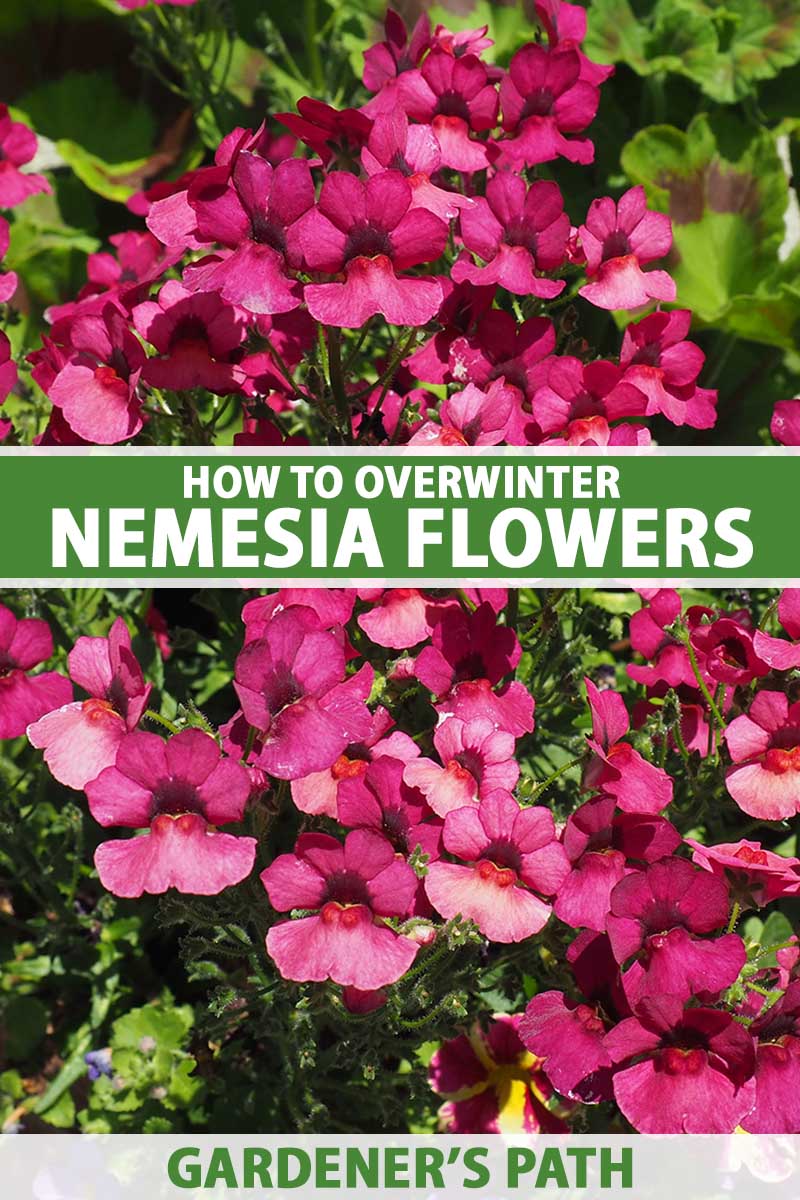
We link to vendors to help you find relevant products. If you buy from one of our links, we may earn a commission.
In Zones 8 and lower, nemesia plants are usually discarded at the end of the growing season when cold temperatures kill them off – but potted ones can easily survive for another growing season if given a frost-free environment.
And who doesn’t love an abundance of their cheery, snapdragon-like flowers nodding in a breeze?
Read more about basic nemesia cultivation in our guide. Here, we’ll focus on extending your enjoyment of these beautiful blooms.
Are you ready to get another growing season (and more!) from this frost-tender perennial? Then let’s uncover what’s needed for nemesia winter care.
Here’s what you’ll find ahead:
What You’ll Learn
Nemesia Basics
Nemesia is a genus of tender perennials native to sandy coastal regions and grasslands of South Africa.

Popular species such as N. strumosa and N. caerulea form low-growing mounds of small, orchid-like flowers that bloom until frost in beautiful variations of blue, maroon, mauve, orange, pink, purple, scarlet, white, and yellow, plus bicolors.
They grow 12 to 24 inches tall with a spread of 12 to 18 inches and are most vigorous in the cooler temperatures of spring and fall – their ideal daytime temperature is 70°F with cooler overnight temperatures.
In areas with hot summers, growth can lag in hot spells.
Hardy in USDA Zones 9 to 10, nemesia can stay in the ground all year in frost-free regions or they can be planted out as winter annuals.
But they can’t handle cold weather – growth stops when temperatures drop to 50°F as plants go dormant.
Outside of their hardiness range, they need to be lifted, potted, then brought into a frost-free environment. But first, it’s helpful to prep them for dormancy.
Prep for Dormancy
After nemesia plants have finished flowering, cut back all foliage.
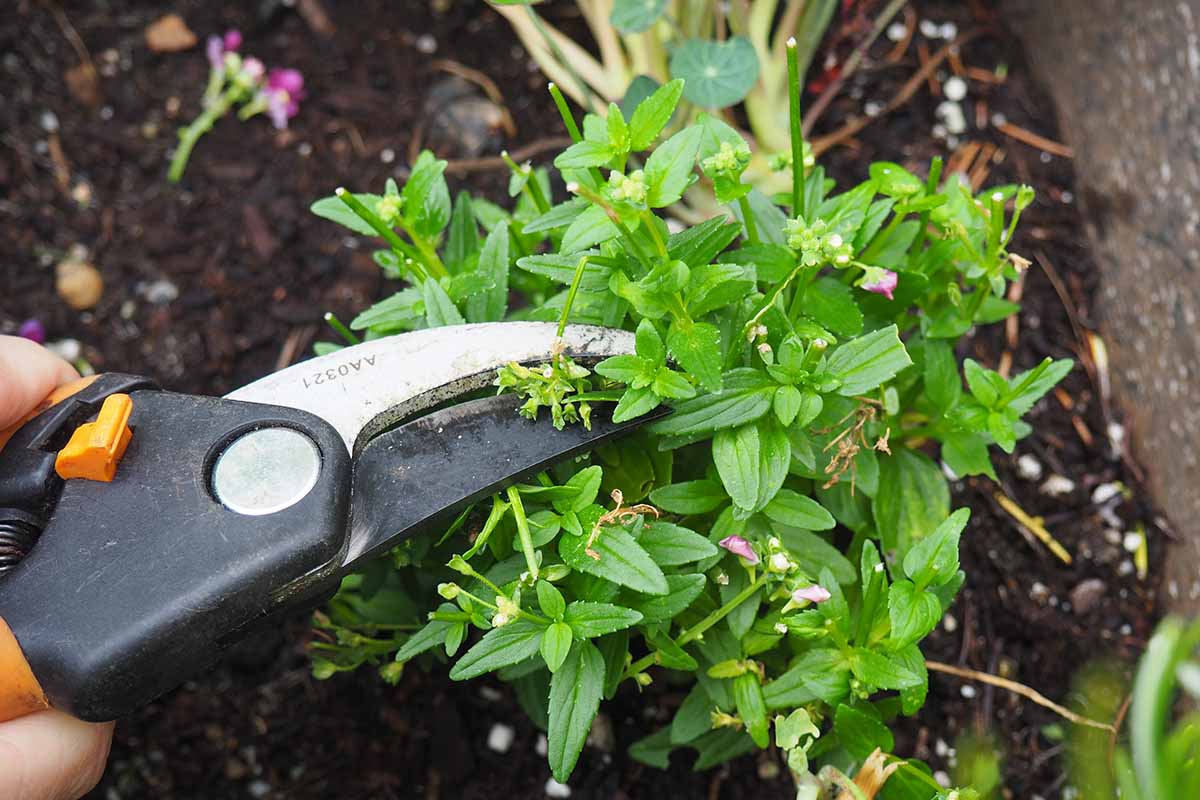
Use clean, sharp garden snips and shear the foliage back to one or two inches above the soil line.
At the same time, withhold water and stop feeding if you haven’t done so already.
Once the soil has dried out – moisture levels should be dry to lightly moist but not wet – lift the plants and pot up for frost-free storage.
Pot Them Up
To safely store your nemesia plants, they need to be lifted from their beds after flowering but before the first frost, and transplanted into containers so they can be brought indoors.

Use a sharp spade fully inserted to lift the root ball and taproot in one piece.
Choose any type of container with drainage holes that’s large enough to hold the rootball plus another two to four inches in diameter for ease.
These plants go dormant so watering is held to a minimum, but it resumes in spring, often before they can be planted out. It’s best to prepare now by providing well-draining soil.
I like to add a layer of drainage material like broken pottery over the hole to ensure excellent drainage.
Fill with a light, humusy potting soil.
Knock away excess soil from the root ball then settle in place at the same depth as in the garden, or with the crown just below the soil line.
Backfill with soil and firm gently.
If the soil is very dry, water sparingly.
Cold Weather Care
Because these plants go dormant, nemesia doesn’t make an attractive wintertime houseplant.
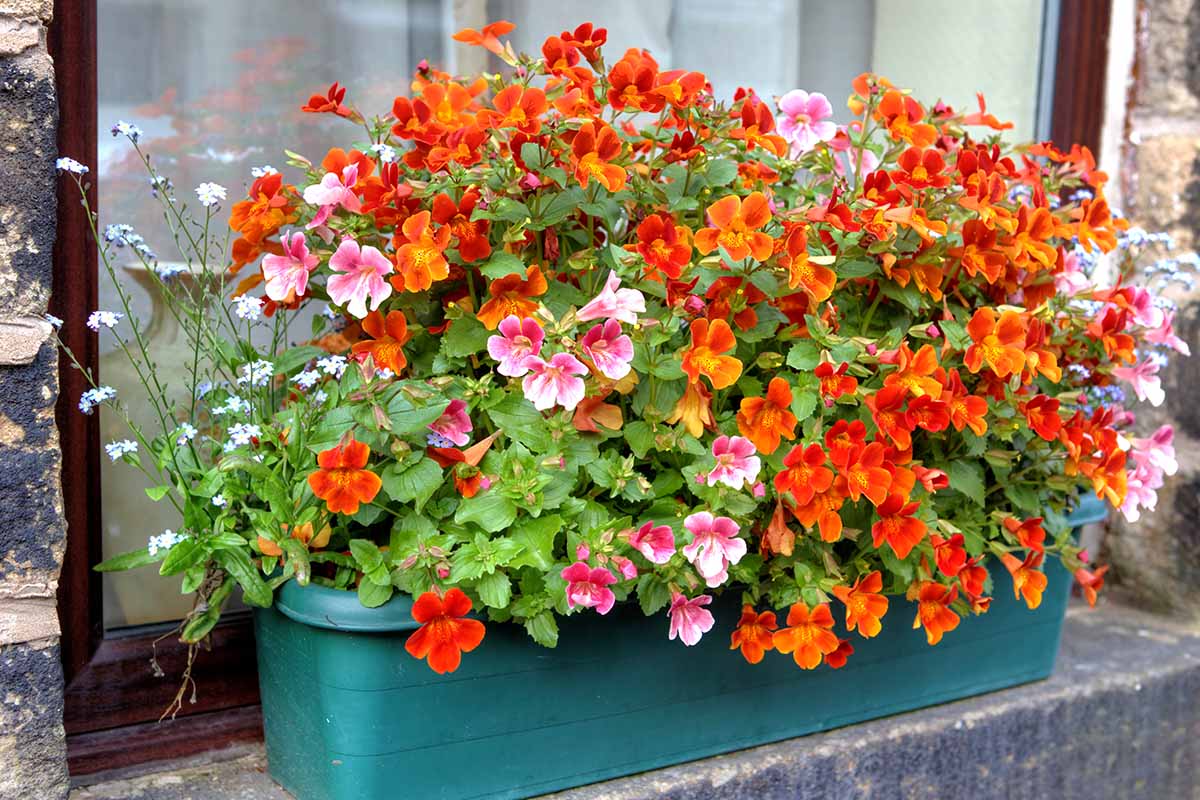
It will do best in a protected spot, like a cool room with indirect light where temperatures don’t drop below 45°F. The recommended comfort zone for storage is in the range of 50 to 65°F.
Good locations include a windowsill in a basement, garage, or shed, a heated greenhouse or conservatory, or a covered porch or mudroom.
While dormant, allow the soil to dry out between water applications, giving the plants only a small sip to barely moisten the roots. In cold weather, these tender plants are prone to root rot and wet soil must be avoided for healthy storage.
When new growth appears as spring approaches and the days start to lengthen, gradually increase watering.
Once growth is about four inches tall, maintain slightly moist soil and feed with an all-purpose fertilizer with a balanced formula.
Try this Enhanced Organic Plant Food with a 5-5-5 NPK from Burpee.
Plant out into beds, containers, and window boxes once all danger of frost has passed.
Fantastic Flowers
After it’s back in the garden again, your overwintered nemesia will put on another display of richly colored, fantastic flowers!
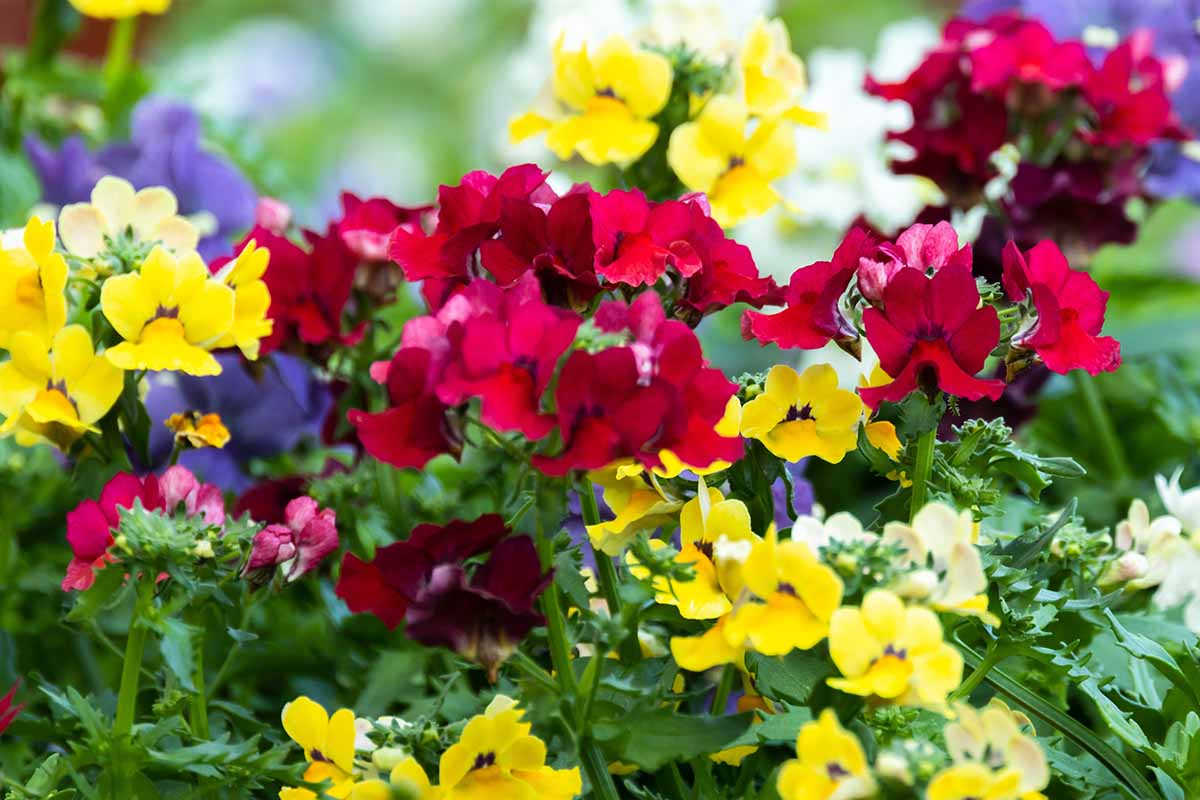
Remember to help them into dormancy by withholding water, then pot up plants for storage in a cool, frost-free room – and go easy on the water until new growth appears next season.
You’ll be richly rewarded with a long flowering season of colorful, easy-care blooms!
Do you overwinter tender perennials like nemesia for another growing season? Tell us about it in the comments section below.
And for more ideas on how to keep tender perennial flowers alive through the winter season, read these guides next:
